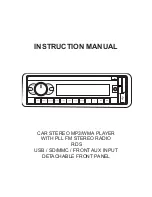
C-Nav Hardware Reference Guide
8
Chapter 1 ....................................................................... Overview
C-Nav and Global Navigation Satellite Systems
Traditional Differential GNSS Positioning
Traditional Differential GNSS (DGNSS ) relies on the concept that errors in position at one
location are similar to those for all locations within a given (local) area. By recording GNSS
measurements at a point with known coordinates, the local GNSS observation errors can be
quantified and one pseudorange correction for each GNSS satellite observation can be
computed. By transmitting these pseudorange corrections to remote mobile users and applying
them in real-time, the remote mobile user accuracy of GNSS for instantaneous horizontal
positioning is reduced to less than 5 meters (and even sub-meter with modern commercial
survey grade GPS receivers) 95% of the time.
In traditional DGNSS, pseudorange corrections are generated at a reference station. By
transmitting these individual corrections for satellites all-in-view, the mobile user can apply the
pseudorange corrections for the common in-view satellites observed at the mobile location.
In order to minimize any errors that may be introduced, it is imperative that the reference station
and the mobile user are able to track the same GNSS satellites and thus the maximum baseline
distance is one limiting factor with traditional DGNSS. Another is that the accuracy of the mobile
user’s position will be degraded as the baseline distance separation between the reference
station and the mobile user increases. This is due to geographic spatial de-correlation errors
introduced by the different ionospheric delays and GNSS satellite orbit biases between the
DGNSS reference site and each individual mobile DGNSS user. The reference station (or
network) computes not only a pseudorange correction (PRC) for each satellite, but also a range
rate correction (RRC). Thus, the mobile user is able to model the time varying characteristics of
the pseudorange corrections over the time intervals in which they are periodically generated at
the reference station and applied at the mobile location (age of correction). DGNSS
pseudorange corrections combine together all errors produced by the GNSS satellite;
ephemeris, clock, and atmospheric delays, at one time for the reference station position.
Sources of GNSS Error
GNSS user range error and bias sources can be identified as follows:
Ephemeris Data
: Errors in the tracked location of a GNSS satellite in its orbit
Satellite Clock
: Errors in a satellite’s atomic clock signal
Ionosphere
:
Errors caused by ionospheric path delay
Troposphere
: Errors caused by tropospheric path delay
Multipath
: Errors caused by reflected signals received by the GNSS antenna
Receiver
: Errors in the measurement of time/range caused by thermal noise, computation
accuracy, and inter-channel biases
Summary of Contents for IALA
Page 1: ...DGNSS Systems Hardware Guide www cnavgnss com...
Page 20: ...C Nav Hardware Reference Guide 20 Figure 2 3 C Nav Antenna Mounting Pole Dimensions...
Page 65: ...C Nav Hardware Reference Guide 65 Model No 3402 17 0070 Specifications...
Page 67: ...C Nav Hardware Reference Guide 67 Huber Suhner Lightning Protector Mounting Instructions...
Page 68: ...C Nav Hardware Reference Guide 68...
Page 69: ...C Nav Hardware Reference Guide 69 MOXA Converters TCC 80I TCC 80I Specifications...
Page 72: ...C Nav Hardware Reference Guide 72 Times Microwave LMR400 Coaxial Cable LMR400 Specifications...









































